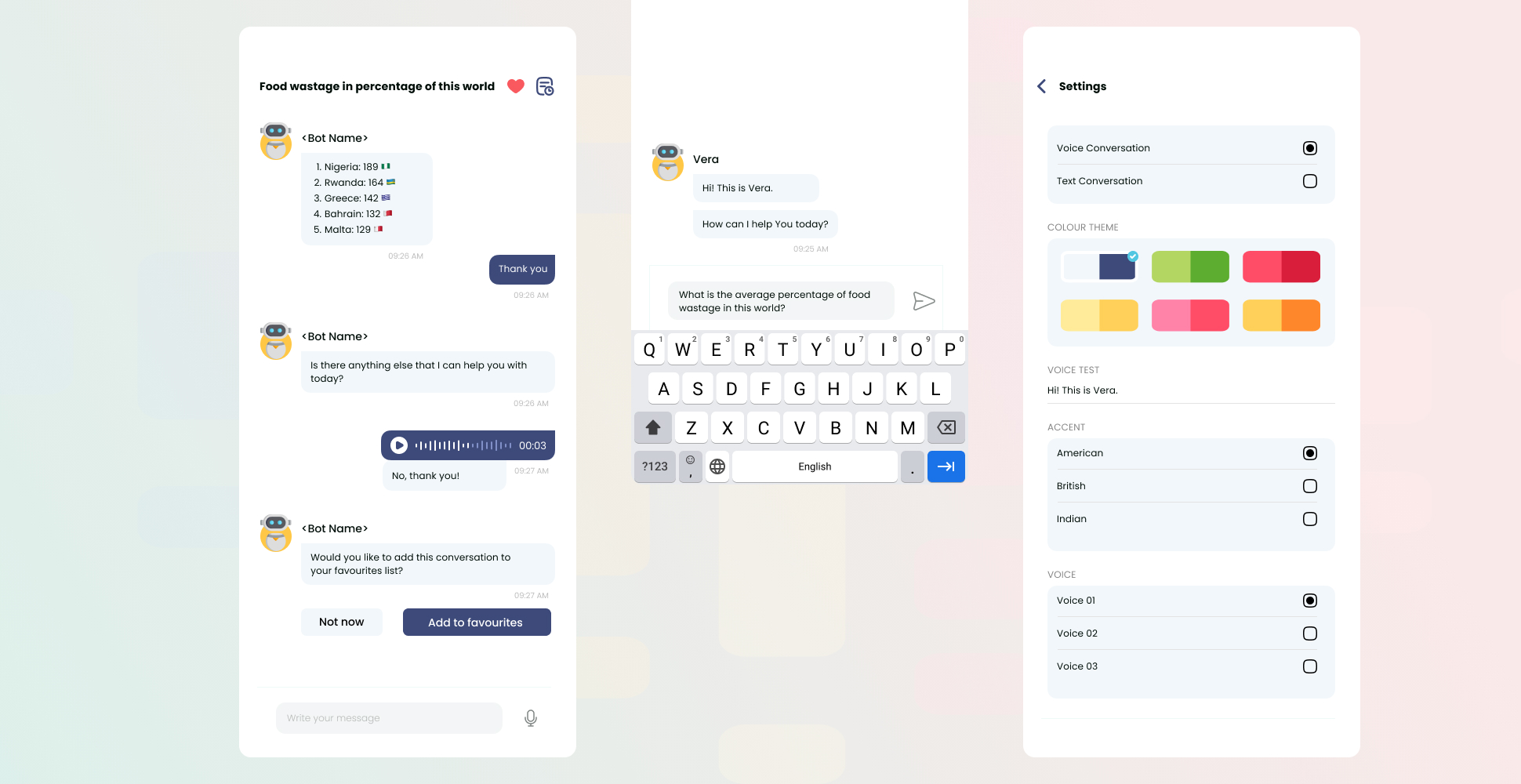Case Studies

Vera
UX, UIVera is an AI-powered chatbot designed as a Software-as-a-Service (SaaS) product to be integrated across various websites. Developed as an internal project, Vera leverages a Large Language Model (LLM) to provide intelligent, context-aware interactions with users. My role in this project was pivotal, as I led the visualization and design of both the User Experience (UX) and User Interface (UI), ensuring that Vera would not only meet but exceed user expectations in terms of usability and simplicity.
Challenges
Versatility Across Platforms: Vera needed to be adaptable to various website integrations, requiring a highly flexible and universal design approach.
User-Friendly Experience: Given the broad potential user base, the challenge was to create a chatbot interface that was intuitive and easy to use for individuals with varying levels of technical proficiency.
Balancing Innovation with Familiarity: While the goal was to create a state-of-the-art chatbot, it was essential to maintain a balance between innovative features and familiar interaction patterns to ensure user comfort.
Research and Discovery
1. User Research:
Target Audience Identification: Conducted detailed user research to identify the primary users of Vera, ranging from casual website visitors to more tech-savvy users who interact with chatbots regularly.
Usability Testing: Performed usability tests with prototypes on diverse user groups to gather insights into how different demographics interact with chatbots and to identify pain points in existing solutions.
2. Competitive Analysis:
Feature Benchmarking: Analyzed leading chatbot solutions in the market to identify best practices and features that enhance user interaction. This analysis helped in determining which features to incorporate, adapt, or improve upon in Vera.
3. Problem Statement:
Users often encounter chatbots that are either overly complex or too simplistic, leading to frustration and abandonment. The challenge was to design Vera in a way that strikes the perfect balance between simplicity and functionality, ensuring a seamless user experience across various contexts.
Design Approach
1. Ideation and Conceptualization:
Simplicity as a Core Principle: Focused on simplicity and ease of use as the guiding principles for the design process. This involved minimizing the cognitive load on users by creating a clean, intuitive interface that was easy to navigate and interact with.
Universal Design: Designed Vera to be adaptable across different websites without losing its core functionality or user experience. This involved creating flexible UI components that could be easily customized while maintaining consistency in the user experience.
2. UX Design:
Interaction Flow Design: Developed a streamlined interaction flow that anticipates user needs and provides clear, context-aware responses. This flow was designed to minimize the number of steps required for users to complete their tasks, enhancing the overall efficiency of the chatbot.
Consistency in Experience: Ensured that the user experience remained consistent across different platforms by establishing a unified design language and interaction patterns. This approach helped in maintaining user familiarity and comfort, regardless of where Vera was deployed.
3. UI Design:
Minimalist Interface: Created a minimalist user interface that prioritizes ease of use, with clearly defined elements and intuitive navigation. This design choice was aimed at reducing visual clutter and making the chatbot’s functionalities easily accessible.
Adaptive Design: Designed Vera's UI to be responsive and adaptive, ensuring a seamless experience on both desktop and mobile devices. The adaptive design also allowed for easy customization by different website owners, making it versatile for various use cases.
4. Feature Integration:
Best-in-Class Features: Integrated the best features from leading chatbot solutions, such as quick reply buttons, context-aware suggestions, and smart escalation paths, all while ensuring these features did not compromise the simplicity and user-friendliness of Vera.
Accessibility Considerations: Incorporated accessibility features to ensure that Vera could be used by individuals with disabilities, making the product more inclusive.
Outcome and Impact
1. User Adoption:
High Engagement Rates: Vera was well-received upon launch, with high engagement rates reported across the websites where it was deployed. Users appreciated the simplicity and efficiency of the chatbot, leading to increased satisfaction and repeat interactions.
Versatile Integration: The design’s flexibility allowed for easy integration across a wide range of websites, making Vera a popular choice for businesses looking to enhance their customer interaction channels.
2. Business Impact:
Enhanced Customer Experience: Vera significantly improved the customer experience for the businesses that adopted it, leading to higher customer satisfaction scores and a reduction in support queries.
Scalability: The universal design approach ensured that Vera could be easily scaled and customized for various industries, making it a valuable asset in the company’s product portfolio.
3. Recognition and Feedback:
Internal Success: The project was deemed a success internally, with the design approach being praised for its balance of innovation and user-centered simplicity. Vera became a model for future internal projects involving AI and user interaction.
Key Takeaways
This project highlighted the importance of user research and simplicity in design, especially when creating a product intended for wide-scale adoption across different platforms. By focusing on user needs and integrating best practices from the industry, we were able to create a chatbot that not only met but exceeded user expectations, making Vera a standout product in the competitive SaaS market.